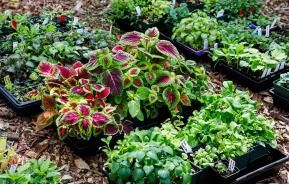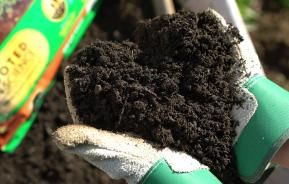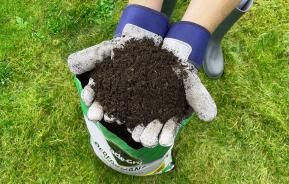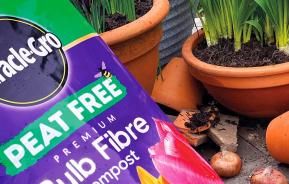Snowdrops are tough, reliable plants, generally flowering in the height of winter, often poking their heads above overlying blankets of snow. They are a cheerful sight in the garden, flowering when little else will, marking the height of winter and that the beginning of spring is not far behind.
The graceful, white nodding snowdrop flowers usually have distinctive green markings. These vary from variety to variety, many are multi-petalled and there are probably more different types than you think. Some gardeners become so fanatical about building up collections of all the different ones that they have been christened with the name ‘Galanthophile’ – snowdrop lover!
And not all snowdrops flower in late winter/spring, Galanthus reginae-olgae is an autumn-flowering snowdrop.
How to grow snowdrops
Cultivating snowdrops
Snowdrops prefer a position in light shade. They grow naturally in woodlands or cool mountain meadows, so need a position that is neither hot nor dry. The dappled shade near trees and shrubs is a perfect position for them, although they also grow brilliantly well among herbaceous perennials. Galanthus nivalis and others can also be naturalised in light grass.
They’re not too fussy about soils types – including heavy clay – but prefer a well-drained, humus-rich, moist soil. When planting in light, sandy soils incorporate lots of bulky organic matter at planting time.
Snowdrop varieties
There are dozens of snowdrop species and varieties. The following are recommended by the Royal Horticultural Society:
- Galanthus Atkinsii
- Galanthus elwesii var. monostictus
- Galanthus Magnet
- Galanthus nivalis
- Galanthus nivalis f. pleniflorus Flore Pleno
- Galanthus plicatus
- Galanthus reginae-olgae subsp. reginae-olgae
- Galanthus S. Arnott
- Galanthus woronowii

Planting snowdrops
Dry snowdrop bulbs planted in autumn often fail to grow or don’t perform very well because they may have dried out too much. Growing them from plants and planting when flowering has finished but they’re still in leaf, called ‘in the green’, is usually a far better method.
Plants sold in the green are often freshly dug up, so the roots have been severed, causing a check in growth. So it is vital to water them in as soon as they are planted to re-establish root contact with the soil. The best method is to buy potted plants – although they are more expensive, they will establish much better.
Always improve the soil with lots of added organic matter, as it is important that the soil doesn’t dry out in summer.
Plant bulbs 10cm (4in) deep and 10cm (4in) apart.
Suggested snowdrop planting locations and garden types
Flower borders and beds, patios, containers, city and courtyard gardens, cottage and informal gardens, naturalising in grass.
How to care for snowdrops
Caring for snowdrops is easy as they rarely need watering when growing in the ground, unless the soil dries out during prolonged dry periods.
When feeding snowdrops, give them a light feed with a granular general plant food after flowering. Watering with a liquid plant food after flowering and until the foliage starts to die down will help build up their strength and size for the following year’s flowering.
Allow the foliage to die down naturally in spring.
If snowdrops have been growing in the same soil for several years and no longer flower profusely, lift them, carefully split them into smaller clumps and replant at the same depth in soil that has had organic material and slow-release feed added.
| Flowering season(s) | Spring, Autumn, Winter |
|---|---|
| Foliage season(s) | Spring, Autumn, Winter |
| Sunlight | Partial shade |
| Soil type | Chalky, Clay, Loamy, Sandy |
| Soil pH | Neutral |
| Soil moisture | Moist but well-drained |
| Ultimate height | Up to 20cm (8in) |
| Ultimate spread | 7.5cm (3in) |
| Time to ultimate height | 3-4 months |








